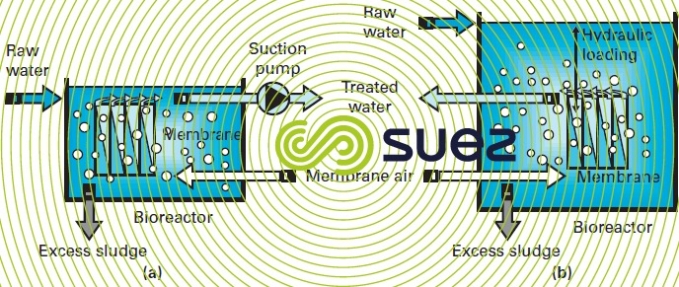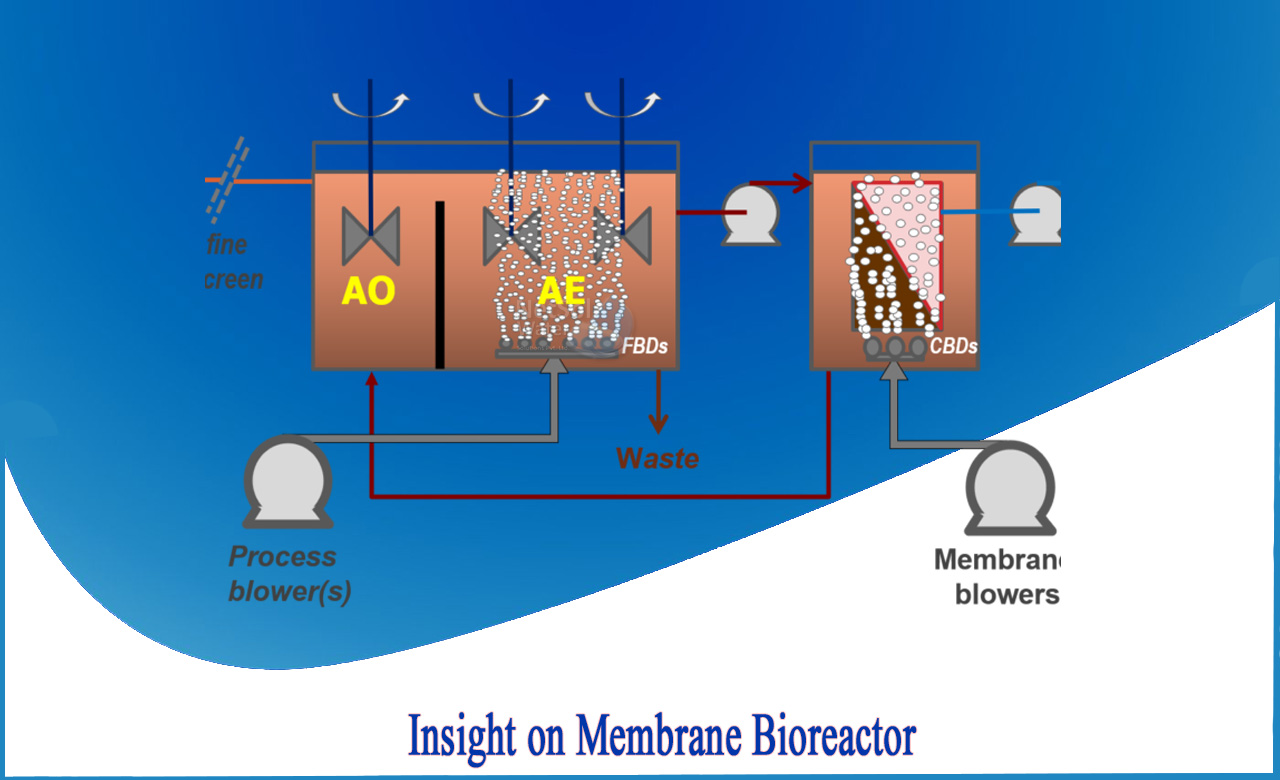The Role of Membrane Bioreactor in Achieving Higher Effluent Quality Standards
Wiki Article
Recognizing Membrane Bioreactors: The Future of Wastewater Therapy
Membrane layer bioreactors (MBRs) stand for a significant advancement in the area of wastewater therapy, integrating organic processes with sophisticated membrane purification to improve effluent high quality. As worldwide water shortage and stringent regulative frameworks become increasingly pushing concerns, MBR innovation supplies an efficient action through its capacity to reduce impact and enhance resource healing. Nevertheless, the fostering of MBRs is not without its obstacles, which warrant mindful factor to consider. What are the key factors influencing their application and lasting practicality in different contexts? The answers may reshape our technique to wastewater management.What Are Membrane Layer Bioreactors?

The core parts of MBR systems consist of a bioreactor where microbial task happens and a membrane layer device that filterings system the blended alcohol. This dual functionality allows the simultaneous destruction of raw material and solid-liquid splitting up in a solitary step. MBRs can run in both immersed and exterior configurations, with submerged systems being a lot more typical as a result of their portable layout and functional effectiveness.
The adoption of MBR modern technology has gained traction in different applications, varying from municipal wastewater therapy to commercial effluent administration. MBRs are particularly advantageous in situations where room is restricted or rigid effluent high quality standards must be fulfilled. By maintaining a high concentration of microorganisms within the bioreactor, MBRs enhance the degradation of natural contaminants, thereby generating higher therapy efficiencies contrasted to conventional approaches.
Secret Benefits of MBR Technology
The integration of biological treatment with membrane layer filtering in MBR systems uses various benefits that set it besides conventional wastewater therapy approaches. Among the main advantages is the improved effluent quality. MBRs successfully get rid of put on hold pathogens and solids, attaining greater levels of filtration that fulfill rigorous discharge requirements and help with water reuse applications.
An additional significant advantage is the minimized sludge production. MBR systems generate less excess sludge, leading to reduced disposal prices and a decrease in environmental influence. The closed nature of the membrane layer system decreases the threat of odor discharges and improves general process control.
Finally, MBRs are functional and versatile, making them suitable for various wastewater kinds, consisting of commercial and municipal sources. The ability to integrate with sophisticated therapy modern technologies further enhances their performance, making MBRs an encouraging option for the future of wastewater administration.
Challenges and Limitations of MBRs
While MBR technology supplies many benefits, it additionally faces a number of challenges and constraints that can affect its extensive adoption. One significant difficulty is the high capital and operational expenses related to MBR systems. The preliminary investment for membrane layer products and the required infrastructure can be considerable, making it much less available for smaller sized towns or sectors.Additionally, membrane layer fouling continues to be an important issue that can decrease system performance and boost maintenance demands. Fouling happens when solids, organic issue, or bacteria gather on the membrane layer surface area, causing minimized permeability and requiring constant cleansing or substitute.
An additional limitation entails the intricacy of the modern technology. MBR systems need proficient personnel for operation and upkeep, which can be an obstacle in regions with limited technological expertise. Furthermore, the disposal of spent membrane layers provides ecological issues, as the materials are often not naturally degradable and can add to throw away management challenges.
Finally, while MBRs can effectively deal with a vast array of wastewater, they may not appropriate for all applications, specifically those with high focus of fats, oils, and oils, requiring more research study and development to address these limitations.
Applications of Membrane Bioreactors
In numerous sectors, membrane layer bioreactors read here (MBRs) have actually arised as a flexible service for wastewater treatment (Membrane Bioreactor). Their applications cover community, commercial, and agricultural setups, showcasing their flexibility and efficiency in diverse settings. In municipal wastewater treatment plants, MBRs significantly enhance effluent top quality, permitting for water reuse and minimizing the ecological impact of discharged wastewaterIndustrially, MBRs are used in food and beverage processing, fabric manufacturing, and pharmaceutical manufacturing, where they successfully treat high-strength waste streams. Their capability to deal with varying lots and varying impurity focus makes them particularly valuable in these markets. In addition, MBRs promote the elimination of virus, put on hold solids, and organic matter, adding to compliance with stringent discharge regulations.
In farming, MBRs are significantly used for treating agricultural runoff and livestock wastewater, making it possible for the recovery of nutrients for fertilizer manufacturing. They also aid in the therapy of greywater for irrigation, advertising lasting water administration practices.
The convenience of MBRs is more shown by their assimilation with other technologies, such as anaerobic food digestion and advanced oxidation procedures, enhancing total performance and source healing in wastewater treatment systems.
helpful site
The Future of Wastewater Treatment
Advancements in innovation and a growing focus on sustainability are shaping the future of wastewater treatment. Membrane bioreactors (MBRs) exemplify this shift by integrating biological treatment procedures with membrane purification, leading to top quality effluent ideal for reuse. The trend towards round economies is prompting centers to adopt MBRs for their capacity to recuperate sources, such as water and nutrients, from wastewater.Technologies in membrane products and arrangement are enhancing the effectiveness and durability of MBR systems, lowering operational expenses and power usage. Smart modern technology combination, consisting of real-time surveillance and automated control systems, is more maximizing efficiency and making it possible for anticipating maintenance, therefore minimizing downtime.
In addition, social assumptions and regulatory pressures are pushing industries and communities to embrace even more lasting techniques. Membrane Bioreactor. The shift in the direction of decentralized wastewater treatment remedies is getting grip, permitting local therapy that minimizes transport prices and power usage
Verdict
Membrane bioreactors (MBRs) stand for a transformative technique to wastewater treatment, incorporating organic processes with sophisticated membrane layer innovation. The advantages of MBRs, consisting of boosted effluent top quality, decreased spatial needs, and lower sludge production, position them as a viable option in the middle of growing urbanization and stricter environmental visit this page guidelines. Despite existing difficulties, the continued technology in membrane products and operational methods assures to reinforce the effectiveness and fostering of MBRs, guaranteeing their pivotal function in the future of lasting wastewater administration.Membrane bioreactors (MBRs) stand for a noteworthy advancement in the area of wastewater therapy, incorporating organic processes with innovative membrane layer filtering to improve effluent quality.Membrane layer bioreactors (MBRs) integrate organic therapy processes with membrane layer filtration to successfully deal with wastewater.The combination of biological treatment with membrane layer filtration in MBR systems provides countless advantages that set it apart from typical wastewater treatment methods. Membrane bioreactors (MBRs) exemplify this shift by integrating organic therapy processes with membrane layer purification, resulting in top notch effluent appropriate for reuse.Membrane bioreactors (MBRs) stand for a transformative technique to wastewater treatment, incorporating biological procedures with sophisticated membrane modern technology.
Report this wiki page